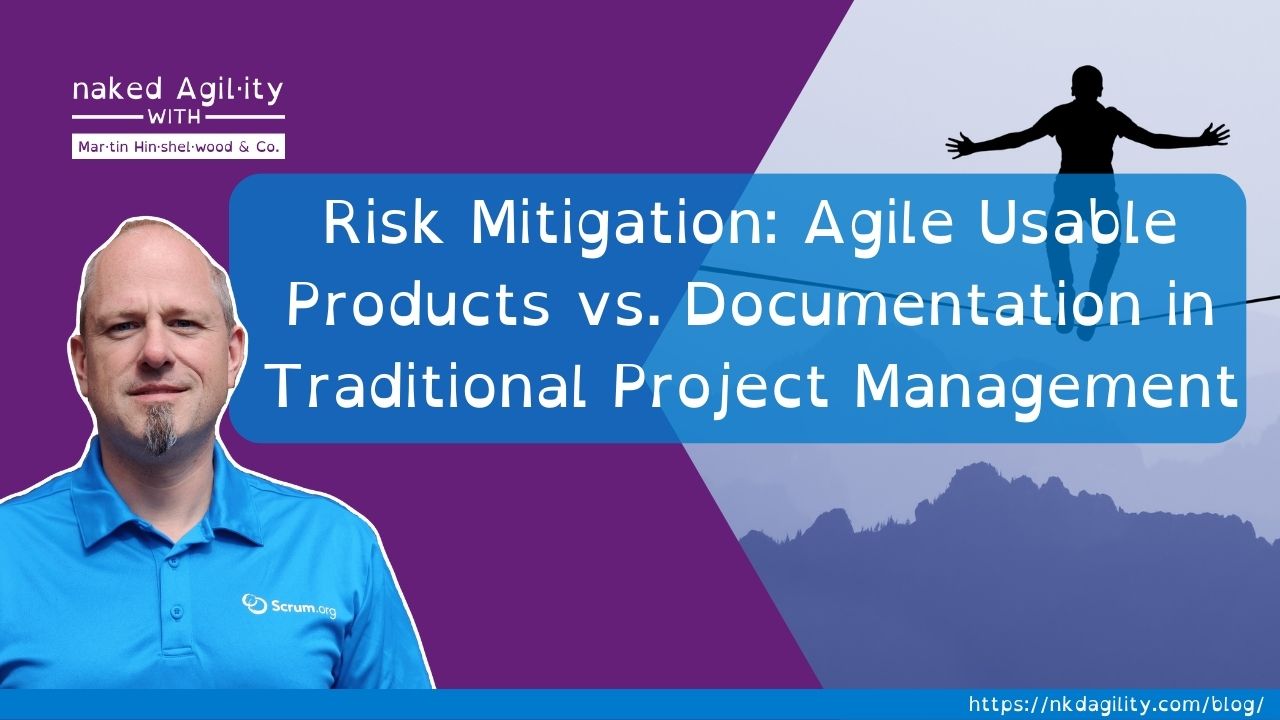As the software development landscape evolves, evaluating the time-tested traditional project management strategies alongside the burgeoning agile methodologies is essential. The central tenet I would like to explore today is comparing using usable working products as a risk mitigation strategy in Agile with the elaborate documentation characteristic of traditional project management.

TL;DR:
Agile's emphasis on incremental development with working software mitigates risks efficiently by validating real-world use early and continuously. Traditional project management often leans towards exhaustive documentation, which, although it provides an essential framework, can be sluggish and less adaptive to change. While documentation is crucial, Agile’s approach to building usable increments might prove more valuable in the rapidly evolving product world.
Agile's Usable Working Products
Agile approaches, such as Scrum, lay the foundation for teams to focus on delivering working software incrementally. This pragmatic strategy creates an environment where the product is continuously validated, improved, and adapted to customer needs and market conditions. Through DevOps practices and automation, engineering excellence forms the backbone of this approach.
Picture this - Your team is building an innovative web application. By focusing on creating minimal product and incrementally adding features through continuous integration and deployment, you swiftly detect issues, adjust to market changes, and receive customer feedback. Essentially, you have a pulse on the real-world application of your product.
This brings me to the very essence of why Agile is increasingly alluring - Continuous Validation and Adaptation. It’s the ability to say, “Here’s what we built; let’s test, deploy, and improve.” You sidestep the monolithic menace of releasing a massive project only to discover that some features are irrelevant, or worse, the product is plagued with issues.
However, Agile's approach demands a high degree of discipline, collaboration, and transparency among team members. Moreover, the working product might be partial in terms of features but must be free from critical defects.
Traditional Project Management’s Documentation
Traditional project management, often associated with Waterfall methodology, emphasises thorough documentation and upfront planning. Every requirement, specification, and design element is meticulously detailed. This documentation can serve as an essential blueprint, ensuring that everyone is on the same page, literally.
However, extensive documentation might lead you down a path where adaptation is strenuous. As we know, change is the only constant, especially in technology. What if a competitor launches a similar product, or there’s a shift in customer preferences? Rigid adherence to documentation without real-world validation until late in the project could spell catastrophe.
Don’t get me wrong – Documentation is vital, but less so than working product. But should it be the centre stage, or can it be adaptive?
Striking the Balance
Agile’s approach to delivering working products empowers teams to build trust with stakeholders through transparency and early delivery of value. It’s about being adaptive, receiving feedback, and incrementally enhancing the product.
Traditional project management practices can still be indispensable in providing an initial framework. Still, overemphasising will impair the ability to swiftly navigate the turbulent waters of the market.
In preparing for battle, I have always found that plans are useless, but planning is indispensable! - Dwight D. Eisenhower
The agile philosophy does not say that documentation or planning is useless. This is a common misconception. It does, however, say that adapting to change is more important than following the plan and, more critically, that working product I more valuable than comprehensive documentation.
Documentation does not solve a business problem; it merely describes it or a solution for it.
To the professional teams, don’t be afraid to embrace Agile’s working products as a lifeline for risk mitigation. Simultaneously, weave in the essential strands of documentation, but with the agility to adapt.
NKDAgility can help!
These are the kinds of issues that lean-agile practitioners love and most folks hate, and if you need getting to DONE, my team at NKDAgility can help you or help you find a consultant, coach, or trainer who can.
If you have issues that are undermining the effectiveness of your value delivery, it's especially important to find help as soon as you can and not wait!
Which you can do right now. You can request a free consultation with my team or sign up for one of our upcoming professional Scrum classes. Because you don't just need agility, you need Naked Agility.
